Thinking of making the jump between platforms?
Well, Google chairman Eric Schmidt is happy to ease the transition — publishing a 900-word guide on “Converting to Android from iPhone”.

Thinking of making the jump between platforms?
Well, Google chairman Eric Schmidt is happy to ease the transition — publishing a 900-word guide on “Converting to Android from iPhone”.

Remember the rumblings about Apple acquiring PrimeSense, the Israel-based company behind the 3D motion tracking in the original Xbox Kinect? It turns out that the rumor is true, as Apple has officially confirmed the buyout.
Reports dating back to this summer have said Apple and PrimeSense were in talks, and just last week it was being reported that the deal was close to completion. Israeli business site Globes said the deal is valued at $300-$350 million earlier today, and AllThingsD later said the asking price is “around $360 million.”
PrimeSense certainly has expertise in full-body motion tracking, as evidenced by the Kinect, but lately the company has been focusing more on mobile. Its Capri 3D sensor is the smallest in the world and is designed for implementing natural gestures for smartphones and tablets.
Source: AllThingsD

Google announced this week Google Play Newsstand, an app for reading non-book content (magazines, newspapers, blogs and more) on an Android phone or tablet.
Google Play Newsstand is an alternative to Flipboard. But Google gives us no strong reason to choose that alternative.
Here are the three things Google needs to change in order to turn Google Play Newsstand from also-ran to awesome sauce.

Now here’s one for the record books – a special one-of-a-kind Product (RED) Mac Pro, created jointly by Jony Ive and Marc Newson, sold at Sotheby’s on Saturday for $977,000! The upper six figure bid makes the (RED) Mac Pro the most expensive desktop computer ever built or sold.
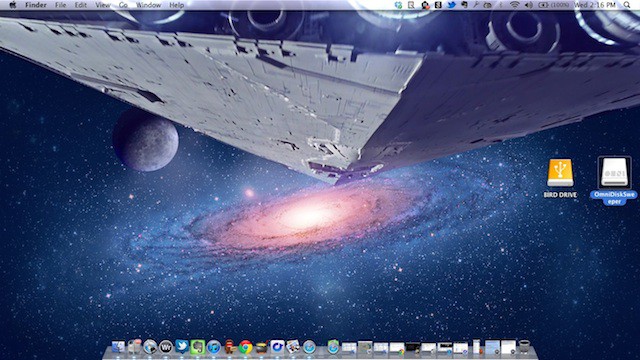
While there are plenty of revelations about how Jony Ive’s aesthetic developed in Leander Kahney’s NYT bestselling biography, Apple fans got a unique glimpse into an informative childhood inspiration for Ive this past week thanks to a television appearance on the Charlie Rose show.
Ive and industrial design pal Marc Newson have been making the media rounds recently to promote a charity auction featuring special items customized by the pair.
However, one item in the auction was neither designed nor modified by the pair: a Star Wars Stormtrooper helmet signed by none other than George Lucas.
![Unleash Firepower And Fun With The iPhone-Controlled Cobra iHelicopter [Deals] redesign_ihelicopter_mainframe_630x473](https://cdn.cultofmac.com/wp-content/uploads/2013/11/redesign_ihelicopter_mainframe_630x473.jpg)
With this Cult of Mac Deals offer, you can turn your living room into a war-zone with this iPhone-controlled, missile-firing helicopter.
Forget toy remotes – you control this hovering hellion with your iPhone, iPod Touch, or
iPad! Just download the free app, plug the transmitter into your headphone jack, and take flight. Grab one of these for just $49.95 – a savings of 28% – and make it a holiday the tech-lover in your life will never forget.
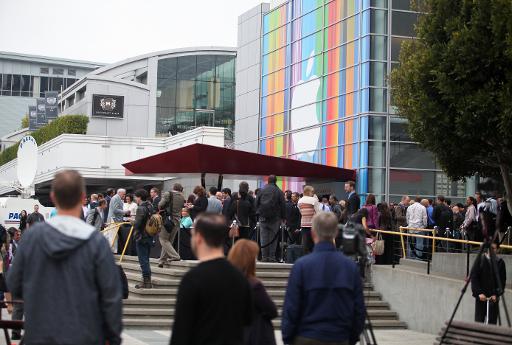
Yes, Apple maintains a press “blacklist,” a list of people in the media who are shunned and ignored — “punished,” as it were, for “disloyalty.”
“Blacklisted” reporters, editorialists and media personalities are denied access to information, products and events.
Once you’re on the list, it’s almost impossible to get off. (I’ve been on it for more than a decade.)
Here’s what everyone needs to know about Apple’s press “blacklist.”
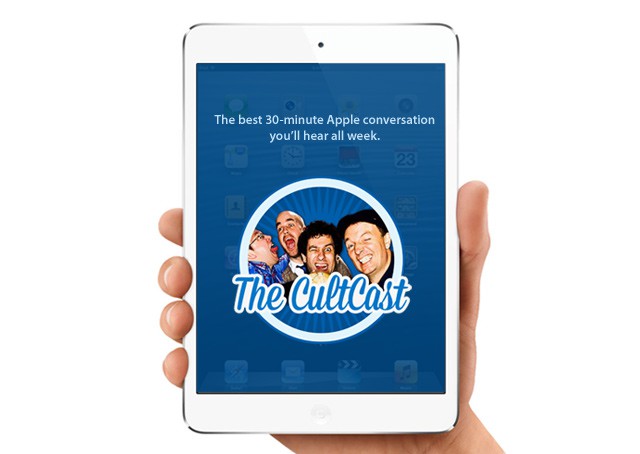
Apple and a 12.9-inch iPad; the first iOS 7 game controller is long overdue; Retina iPad Minis are almost perfect; strategies to backup all those iPhone photos you take; and Adam Christianson from the Maccast podcast joins us on this time on The CultCast!
Have a few laughs and get caught up on each week’s best Apple stories. Stream or download new and past episodes of The CultCast now on your Mac or iDevice by subscribing on iTunes, or hit play below adventure begin.

This week in Cult of Mac Magazine: how some collectors are making serious money with old Macs.
Well, that and how some are discovering that it may be sentimental value that keeps the old machines humming – as it turns out for our publisher, Leander Kahney, who reminisces on the antiquated machines in his life.
And if you dream of finding an Apple 1 or coming across a Twiggy Mac and making a pretty penny, we’ll tell you what happens when those machines roar back to life and come up at auctions.
We’ll also help you figure out what to keep – and toss! – in your collection and showcase some of the coolest ways Apple lovers have repurposed those aging computer carcasses to give them new life.
Our Apple Genius dishes on how to keep your privates protected when you bring your machine in (it’s not as hard as you think) and the best way to let your technician know you’re not a total moron – so you can get your device fixed and get out as soon as possible.
![Keep Your Hard Drive In Top Shape With The Stellar Drive ToolBox for Mac #BlackFriday [Deals] redesign_stellar_mainframe_630x473](https://cdn.cultofmac.com/wp-content/uploads/2013/11/redesign_stellar_mainframe_630x473.jpg)
Never suffer from a system crash, failed hard drive, or dip in system performance again.
The Stellar Drive ToolBox for Mac is a comprehensive bundle of utilities to keep your system healthy and optimized.
All 14 utilities help optimize hard drive performance, protect your data and provide an easy way to repair your hard drive’s volumes – it’s all you need to optimize, repair, and maintain your Mac. And Cult of Mac Deals has it for just $49.99 – 49% off the regular price of $99!

Sure, those old computational machines are making some collectors serious new money. But love of Apple doesn’t always translate into hard cash. Over the years, we’ve covered a lot of cool things you can do with your obsolete — but still near and dear! — Apple gear.
Here are some of our favorites.
![The RHA MA750i Might Be The Last Best Earphones You’ll Ever Need [Review] post-255574-image-b7d52787811342add80223059f4abfad-jpg](https://cdn.cultofmac.com/wp-content/uploads/2013/11/post-255574-image-b7d52787811342add80223059f4abfad.jpg)
There aren’t many in-ear monitors made of steel. Aluminum? Yes. Plastic? Wads. But steel-bodied IEMs — now that’s a rare find. There’s good reason for this: Though the material is solid, hard-wearing and, according to some, produces a cleaner sound, it’s heavy — which can make steel-housed IEMs often uncomfortable and annoyingly ill-fitting.
But forget all that. Scottish-based RHA have managed to make the stainless steel-bodied MA750i supremely comfortable and well-fitted, even under heavy action. In fact, RHA absolutely nailed it perfectly with these ‘phones in every single category that matters, with only two or three minor trade-offs.
![With New Templates, Springpad App Even More Different To Evernote Than Ever Before [Daily Freebie] springpad-1](https://cdn.cultofmac.com/wp-content/uploads/2013/11/springpad-1.jpg)
Springpad launched on the heels of Evernote in 2008. Though the two are superficially alike — they’re both cloud-based note-taking services often accessed though their respective iOS and Android apps — Springpad was always a little more geared toward collecting and organizing groups of things, like products or recipes.
Springpad’s latest update further underscores this difference; it now has a set of templates that can be used for organizing different categories of saved items, as opposed to the more open format of Evernote.
![Find The Popular Apps In Your General Location With Near Me [iOS Tips] Near Me](https://cdn.cultofmac.com/wp-content/uploads/2013/11/Near-Me.jpg)
One of the newer features of iOS 7 is in the App Store. No, I’m not talking about the Wish List feature, which is pretty slick, but the “near me” function of the App Store. It’s a pretty cool thing to play with when you’re traveling, if nothing else.
You can get a neat little list of the hot apps of other people in your general area with this cool little feature, and I did so on my current trip to Hawaii, just to see what people were downloading here in the beautiful city of Honolulu.
You can see my results above, and then try it on your own.

Have you ever looked around your garage or spare bedroom and thought: “There’s enough Apple stuff here to start a museum?”
That’s pretty much what happened to Adam Rosen, who runs the Vintage Mac Museum, a private collection of all working machines, out of his Boston-area home. (Take a peek at his prized pieces in the gallery in this edition.)
The certified Apple consultant and Cult of Mac contributor on all things vintage gave us the skinny on what to do with your burgeoning collection: what to toss, what to hunt for on eBay and what to beg your significant other to let you keep.
Cult of Mac: Since 2009 when the Apple 1s started resurfacing the prices have gone from under $20,000 between private collectors to over $300,000 at Christie’s – any thoughts on whether this is having any effects on the general market for Apple collectibles?
Adam Rosen: Apple 1 prices have been unreal, they’ve sold as high as $670k! This has definitely had an effect on the size of the market for Apple collectibles, expanding it significantly. The effect on value is more variable.
For rare items and prototypes, value has definitely gone up. If you have a prototype clear case Macintosh SE, yeah, that’s gonna interest people. But there were a lot of Apple IIs and Macs manufactured. With so many more people aware of the prices of rare Apple systems the market gets flooded with common models. A Mac Plus today is only worth about $100, even if it’s been in the attic for 20 years.
CoM: A few years back, you said the size of a collection depends on what the person you live with will tolerate – does that still stand? Is there stuff you’ve decided to sell or give away that you were previously holding on to?
AR: That definitely still stands. I’ve been contacted more than once by fellow collectors whose significant other has decided that it is Time for Things to Go, and they are willing to offer me a good deal!
I’m currently single – which lessens pressure from others to shed possessions – but it’s still necessary to purge occasionally in order to reclaim living space.
CoM: You have also said that the original 128K Macintosh is always desirable, does that still stand?
AR: That is still true, and the value has increased. A working 128k Mac is currently worth $750-1,000, one with an original box and packaging can command double that. Vintage Mac prices spiked after Steve Jobs passed away, they’ve come down since but the first model will always be desirable.
CoM: If taking up space with old computers is a problem – what smaller collectibles are worth having?
AR: Funny you should ask that, as my collection has expanded I’ve become more interested in smaller promotional and marketing items. They cost less and look nice next to other equipment. Few are investment worthy yet, but collectively they have some value.
Original Apple marketing schwag is always desirable – posters, pins, buttons. Store display banners are prized, though these can be large. “Think Different” posters are nice but still fairly common – buy a set and hold on to those. Items signed by Steve Jobs are highly valuable; things by Woz not as much, since he has signed so much. Apple clothing, manuals and stationary don’t really command much value.
CoM: What’s the most prized piece in your collection and why? How has that changed over the years?
AR: This has definitely changed over the years. I have a Mac Plus where the back and one side have been replaced with plexiglass to show off an internal hard drive upgrade. This isn’t a translucent prototype, more like a working “cutaway drawing” of the Macintosh. It’s a very unique piece.
I recently bought a 128k Mac with original packaging, I’ve wanted one of those for some time. It’s a must-have for any serious Mac collector.
I’m also a big fan of the Picasso-style artwork. Last year I bought one of those lighted Macintosh logo dealer signs which Apple supplied for the Mac’s introduction. These are gorgeous, I love turning it on and looking at the light reflect inside the engraved glass.
CoM: Any thoughts or advice on finding or buying prototypes? That last Christie’s auction also had that clear cased SE, for example…
AR: eBay is probably the most likely place to find prototypes, it’s the biggest worldwide marketplace. Craigslist can also be a good place to find old tech, especially in the larger cities. Of course, knowing people who once worked at Apple never hurts!
Prototypes of products nobody cared about may not be worth anything. For example, nobody is looking for a developmental Apple III system. But if you can find an unshipped Apple tablet prototype from the 1980s or 90s, grab it.
By the time things show up at Christie’s you know you’re not going to be getting a bargain! I don’t know how much that clear SE actually sold for, I think the last bid I saw was $5,000. That’s still a lot more than a standard SE, which sells in the $100 range.
![Livescribe 3 Is Fantastic, Right Up Until It Sends Your Writing To Your iPad [Review] IMG_3950](https://cdn.cultofmac.com/wp-content/uploads/2013/11/IMG_3950.jpg)
Spoiler: Writing with ink on paper is still way better than stabbing at a hard glass screen with a soft rubbery tip. Double spoiler: writing with a ballpoint pen which records your every stroke for searching and editing on your iPad is amazing, and way better than taking photos of every page you finish just to feed into Evernote. Third spoiler: No matter how good the hardware and the AI behind the scenes, a crappy app lets everything down.

Apple and other tech companies have come under fire for taking all their manufacturing to China, but iPhone-maker Foxconn is looking to turn the tables a bit with its announcement that it plans to build a new $30 million high-tech manufacturing plant in Pennsylvania.

Price info from auction houses; view sources here.
The very first computer Apple ever made has all the hallmarks of a valuable collectible: scarcity, novelty and impracticality.
Steve Jobs and Steve Wozniak cobbled together about 200 of them in a Los Altos garage in the late 70s. (That garage is now slated to become an historical destination.) The Apple 1 cost $666.66 and the pioneers of home computing who bought it had to add their own case, keyboard, video display and power supply to actually use it.
Those machines seemed to be largely forgotten on the larger resale market until 2009, when the economic squeeze made collectors realize those humble-looking relics could morph into serious cash.
The auction escalation for these machines began slowly, with a tech journalist telling the seller of the first one of the bunch to crop up on eBay that “I don’t think your computer is valuable enough to spark much general media interest,” but that a small following of avid collectors would be enough to start a “bidding war.”
Not exactly: that first machine earned its owner $18,000, about $2,000 over the top sum the journalist thought it might fetch. Not bad, but not enough to pay off your mortgage, like the ones selling for around $300,000 just a few years later.
Very few of these iconic homespun machines work – those that can still crunch the cassette interface are worth a lot more, so are those that come with the collateral, including the original box and typed letters on binder paper from a young man who signed himself Steven Jobs. (Watch Wendell Sander, Apple employee no. 16, fire up his Apple 1 for a memory dump using an iPod in our video.)
Since that first auction, media interest has soared. And so have the prices. Once the large auction houses got involved, the prices levitated to a record $671,000 for a working Apple 1 this year.
“I do feel that some of the recent auction prices attained for the Apple 1 are absurd,” Dag Spicer, senior curator of the Computer History Museum told Cult of Mac. The Mountain View, California home to calculating curios holds over 100,000 items, most of them donated, including two Apple 1s. “The death of Steve Jobs and Apple’s ascendancy as the world’s most valuable company has something to do with it.”
There are a few signs that the trend won’t keep climbing. The New York Times reported that an Apple 1 on the auction block in London failed to meet its $75,000 reserve price and another one sold for $375,000 instead of the $500,000 Christie’s expected. The most recent auction in Germany closed without a single bid — though the Apple 1 fetched about $330,000 after the last gavel sounded.
The friendly atmosphere – and the amateur collector-friendly prices – stopped when the auction houses realized that there was plenty of new money to be had with old circuits.
Still, if you want to dig into garage and estate sales seeking a mother lode in a motherboard, you might want to keep Mike Willegal’s site bookmarked. Willegal tends an online registry that has positively ID’d 48 Apple 1s and warns that reproductions are getting harder to tell from the originals. Willegal says owners may be in good faith but cautions: “If you are in the market for an original Apple 1, be extremely careful about what you are investing in.”
And it pays to watch prices, Computer History Museum’s Spicer says: “I have seen an Apple 1 selling for $75K in the last year… so to that buyer who spent 500,000 Euro on one…well, ooops! Lesson: Do your homework!”

Cult of Mac reported early today (or very late last night) that Samsung has been ordered to pay Apple $290 million in its patent trial for copying key features of iOS devices — bringing Apple’s total damages to $930 million.
According to two of the jurors assigned to the case, however, the key factor that swayed the jury in Apple’s favor came down to just one witness: Chicago-based certified public accountant, Julie L. Davis.

Think you got enough Apple stuff? Cult of Mac’s resident vintage expert Adam Rosen has collected so many Apple products over the last three decades, he converted part of his house into a museum to showcase them all. (Read on to see what he thinks you should keep or toss, too.)
Assembling your own collection of Mac gear isn’t easy, but the Vintage Mac Museum has managed to get its hands on some really neat – and odd – items, like a cutaway Mac Plus, a rare black Mac and more Apple memorabilia than any sane person should own.
Here’s a look at incredible assortment of Apple products at the Vintage Mac Museum:

The rare items wall, including a clear-sided Mac Plus, old PowerBooks, and a Macintosh Picasso dealer sign. Mona Switcher Ellen Feiss gazes down from above.
Here’s a Mac Plus where the back and one side have been replaced with plexiglass to show off a hard drive upgrade. This is like a working “cutaway drawing” of the Macintosh.


A rare black Mac, combining a color Mac with a TV tuner and video input. This is a good example of a market dud that makes a desirable collectable. A LaserWriter IINT lurks below.

The first portable Macintosh was known as the “Mac Luggable,” weighing in at 15 pounds with included lead-acid battery. And you thought your laptop was heavy!

The Lisa predated the Macintosh and introduced the world to the GUI. The Newton predated the iPhone and introduced the world to the PDA. And beige and green go well together, colorwise…

The iMac corner. Three iMac DV models run early versions of Mac OS X – Cheetah 10.0, Puma 10.1, and Jaguar 10.2. An Airport Extreme base station hovers above.

The Mac IIci was one of the most popular 68k Macintosh models. The 13-inch Apple RGB display doubled as space heater for small rooms. Mini Steve Jobs is an added bonus.
The PowerMac G4 Cube was the father of the Mac Mini, and grandfather to the upcoming Mac Pro. Beneath that, boxed Macintosh software from System 7 to Snow Leopard.

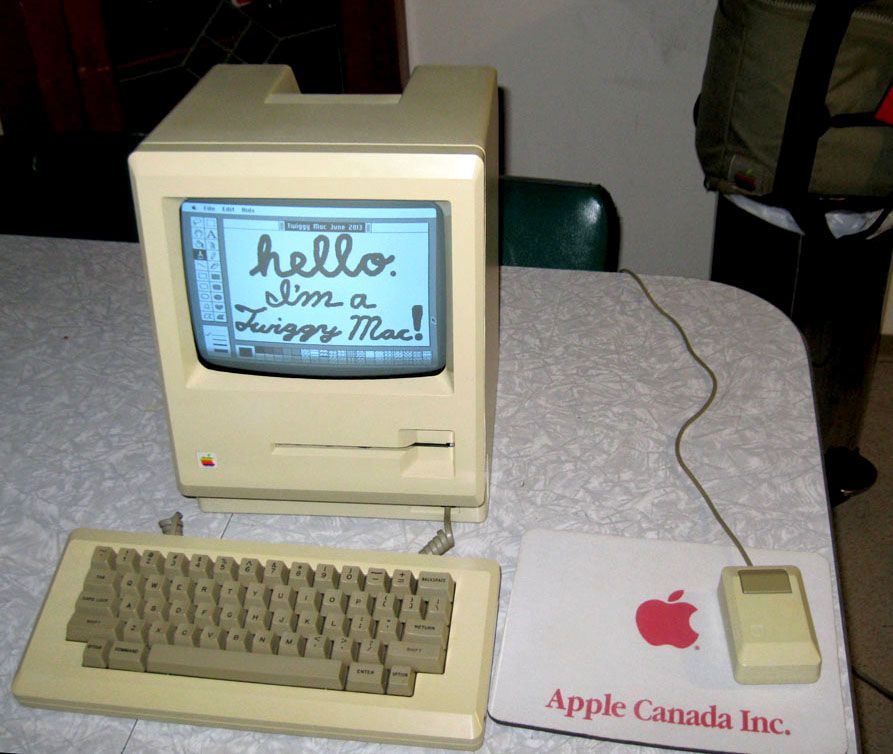
Old computers tend to lead sedentary lives. Parked in shelves and closets, maybe touched by the occasional dusting; the lucky ones still run old games from time to time. But sometimes one becomes a sensation.
The Twiggy Macintosh is a prototype Macintosh 128k that used a 5.25-inch disk drive. Long thought lost to history, two of these primordial Macinti were recently resurrected and returned to life in full working glory. Their rebirth brought about a rare reunion of the original Macintosh design team. And one of them recently repaid the effort by fetching about $40,000 at an auction.
They are — without a doubt — the oldest working Macs in the world.
Here is the story of their amazing journey.

Browsing the App Store can be a bit overwhelming. Which apps are new? Which ones are good? Are the paid ones worth paying for, or do they have a free, lite version that will work well enough?
Well, if you stop interrogating me for a second, hypothetical App Store shopper, I can tell you about this thing we do here.
Every week, we highlight some of the most interesting new apps and collect them here for your consideration. This time, our picks include guides to this day in history, redecorating and cooking steaks.
Here you go:
On A Day Like This — Reference — $0.99
On A Day Like This is a brand-new app that fills you in on significant events for any day you choose. You just swipe in the date you want, and you can flip through events, births, deaths, and holidays and observances. It’s a simple, clean, easy-to-use app that contains a lot of interesting and potentially useful information.
For example, did you know that November 14 is the day that scientists discovered 90377 Sedna, an object that is orbits the sun at three times the distance of Neptune? Slip that into conversation at work and see what happens.
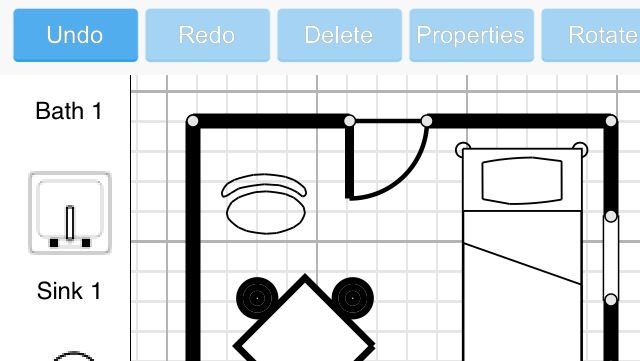
Houseplan — Productivity — Free
In the past, whenever I’ve wanted to change the furniture layout in a room, I’ve broken out the graph paper and made a tiny scale mockup of the space and everything in it. HousePlan is a new app that is designed specifically to keep things like that from happening. First, you place the walls, windows, and doors, and then you can figure out where the furniture goes before you actually have to lift anything. It’s quick and easy to use and the best part is that you don’t have to wonder if that piece of paper you just threw away is a scrap or your chifferobe.

SteakMate — Health & Fitness — Free
How do you know when a steak is done? You have the finger and thumb trick, the weirder face test, the less elegant “cut it open and look at it” test, or a meat thermometer.
Those wanting a more high-tech way to handle meat cookery might want to try SteakMate, a new app that provides custom timers for your grilling needs. You enter in the cut, thickness, cooking method and desired doneness, and it tells you what to do, including when to flip and how long to let it rest. It can even track multiple steaks simultaneously.
Plus, it’s way cleaner and less awkward than touching the steak and then your face.

1 Minute Desk Workout — Health & Fitness — Free
You know how it goes: You’re sitting there at work and you know you should take a break before your hands fall off, but you have all this stuff to do and you’ll get to it after you do this one last thing, but then you don’t. And then you get carpal tunnel syndrome. Like, immediately.
Enter 1-Minute Desk Workout. It will remind you to take hand and back breaks every hour and it’ll walk you through 60 seconds of exercises while it’s at it. It’s kinda like your mom telling you to stop playing video games and go outside. But for your cubicle.

Upcycling — Entertainment — Free
Green-lifestyle blog Eve of Reduction saw your landfill at Whole Foods the other day and thinks it looks tired and kinda flabby. It wants to help, so it has a thing you might want to check out.
Upcycling is a free app full of instructions and suggestions for repurposing and repairing out-of-use items. It’ll show you how to reupholster a chair, what you can do with used paint cans, and show you cool things other people have done with their would-be junk. It’s all arranged and indexed conveniently within the app, and even if you don’t do anything in there, it’s still interesting to browse through.

When I moved to the States 20 years ago from the UK, I had two suitcases. One contained my clothes and other worldly possessions. The other case was filled with my crappy old Macintosh.
The Mac was obsolete even then, but leaving it behind was unthinkable. I held on to it for decades, hauling it across the country and multiple house moves. I’d still have it now, if I hadn’t cooked it showing my kids the joys of OS 6. Moronically, I blocked the top vents with a box and the explosive pop of overheated circuits nearly gave me a heart attack.
The busted Mac was just one of a garage-full of creaky old Apple technology I chucked out recently in a major de-cluttering (mandated, btw, by the wife). The list is too heartbreaking to mention in full, but included dozens of desktops and laptops, as well as boxfuls of obsolete iPods, mice, keyboards, modems, printers, monitors and cables.
Other things that I threw out and probably shouldn’t have? I also disposed of boxes of Apple press passes and press kits, including one for the special-edition U2 iPod that included a nifty poster. I kept one “Think Different” poster (featuring Gandhi) but recycled a bunch of others.
Why did I hoard all this stuff? Mostly laziness. eWaste is a headache. It’s easier to just hold onto it. But part of it was because a lot of this stuff still worked! I might have gotten a new, bigger monitor, but there was nothing wrong with the old one. Sure, it’s VGA resolution, but it still functions!
And then, I always felt there would be a time when I needed that FireWire extension cord, or a serial-to-USB adapter. Right? I’d kick myself if I had one once but threw it out when I needed it. But mostly it was sentimentality. Each item had a specific memory, triggered by softly stroking its chunky beige keys.

EndlessTV – Seasons — Lifestyle — Free
Now that we’ve gotten that pesky “Halloween” thing out of the way with all its gross movies and candy and fun, we can get down to the serious business of planning “The Holidays.” And if you’re getting ready to celebrate American Thanksgiving and need appropriate programming on your phone or iPad right now, EndlessTV’s “Seasons” app might be what you need. It features quick-loading, topical shows (mostly about food) that you can swipe through at your leisure.
I learned how to make a pumpkin pie from an actual pumpkin, and I don’t even know what I’m going to do with that knowledge.
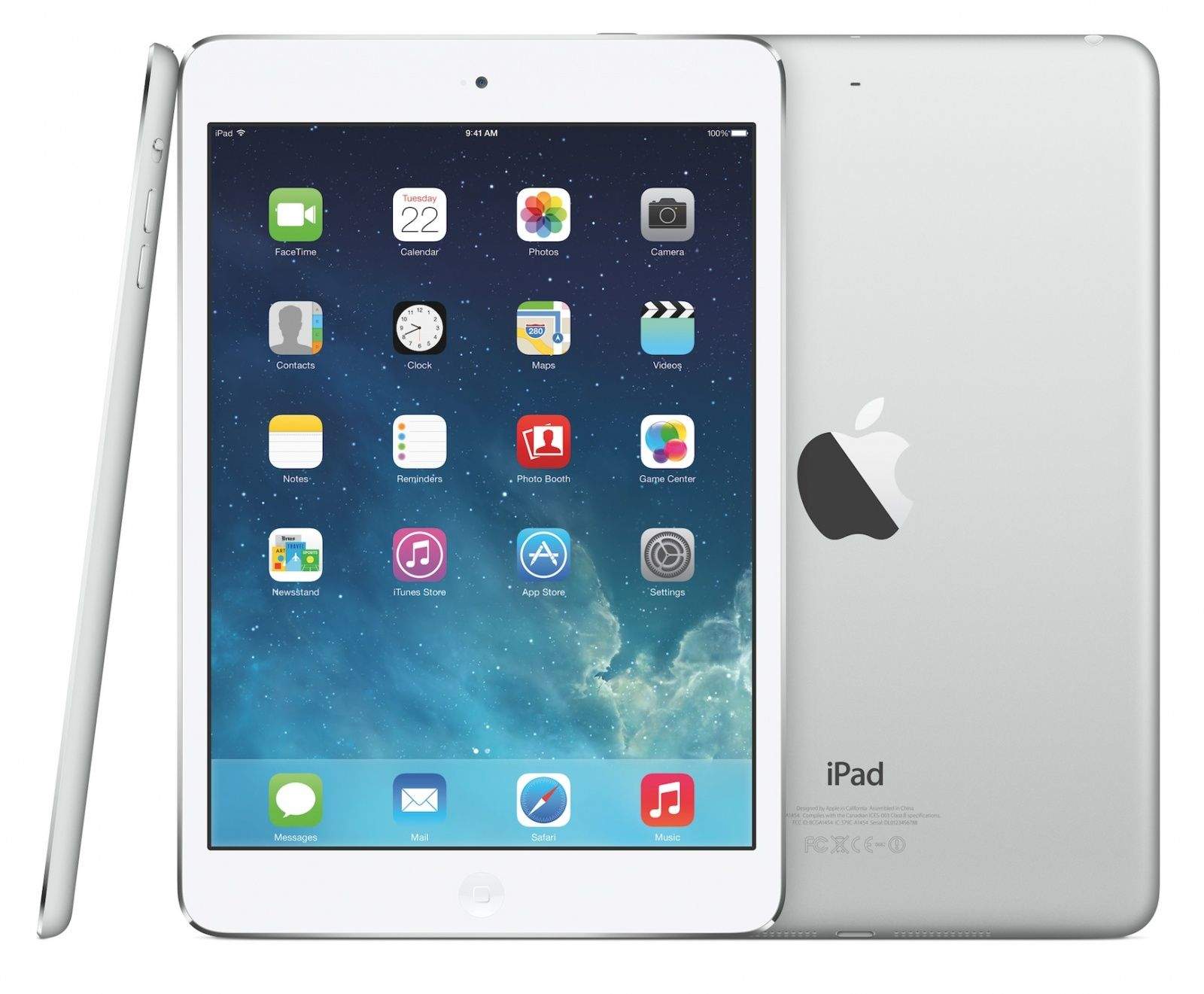
Apple is still facing supply constraints on the 3G/4G units of the iPad mini with Retina display, but it looks like customers can finally walk into an Apple Store and purchase a Retina iPad mini without ordering online first.